|
May 1967 Radio-Electronics
 [Table of Contents] [Table of Contents]
Wax nostalgic about and learn from the history of early electronics.
See articles from Radio-Electronics,
published 1930-1988. All copyrights hereby acknowledged.
|
As with many ancient
mathematical and scientific concepts the provenance of imaginary numbers is open
to opinions. The term "imaginary" seems to discredit the veracity of the
concept, since after all, what good is an imaginary entity? The
Wikipedia account
of imaginary numbers cite the works of Heron of Alexandria, Rafael Bombelli, Gerolamo Cardano,
René Descartes, Leonhard Euler, and Carl Friedrich Gauss, among others. In fact,
the raison d'être for imaginary numbers was to facilitate the solving of
equations involving even roots of negative numbers. If you are not familiar with
such things, a valid root of a number (radicand) must be able to regenerate
itself by raising itself to the same power (exponent) as the index number of the
root. For example, the second root (square root) of 9 equals 3 (√9 = 3); therefore, the second power of
3 equals 9 (32 = 9). What if you need the square root of -9? The
answer cannot be √9 = -3 because -32 = -3 x -3 = 9 (not -9).
Mathematicians introduced an identity operator i (or j for engineers) whose
square is by definition -1 (i2 = j2 = -1). Consequently, √-1 = i (or j), so, again, i2 = j2
= -1. Problem solved. Here is part 1 of a three-part series on the use of
complex numbers, which are composed of both a real part and an imaginary part. A
familiarity with complex numbers is essential for dealing with impedances,
voltages, and currents.
Imaginary Numbers Are a Cinch - Part 1
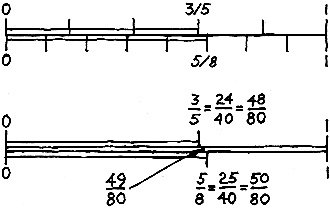
Fig. 1 - Fractions are both real and rational numbers, denote exact quantities.
By Norman H. Crowhurst
Part 1 - Math tools that aren't real, but which work in a real way.
It all started when George needed a filter for the new cross-multiplexing system
he was developing. He called me up about his problem and I asked what he wanted
the filter to do.
"Come on over, bring your design stuff, and I'll show you," was his response.
I went over to his lab and he explained the problem to me. After a little figuring,
which he watched, I sketched a schematic and put the values in.
"We'll have that made up in a jiffy," he said, as he picked up the phone to call
the storeroom for parts.
In less than an hour a messenger brought the parts, George's technician wired
them, and George had a working filter. Satisfied that George had what he wanted,
I turned to leave, but he called me back.
"Just a cotton-pickin' minute," he said. "Can't you show a fellow how you figured
those values in such short order, so I can do it myself next time?"
It took me twice as long to explain it as it had taken me to figure it. He realized
that what made the calculation difficult for him was the use of imaginary numbers,
although that was what made it easy for me. As I left, he made me promise to explain
imaginary numbers to him in easy stages.
One slack afternoon about a week later, not long before closing time, George
and I got together again. "Let's see why the idea seems difficult," was how I started.
"Do you remember when you first encountered irrational numbers?"
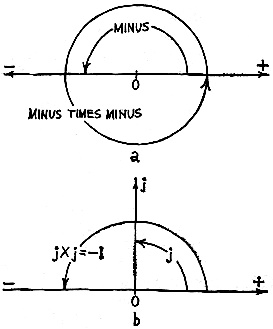
Fig. 2a - Minus times minus makes plus. b-J denotes only 90° change in phase.
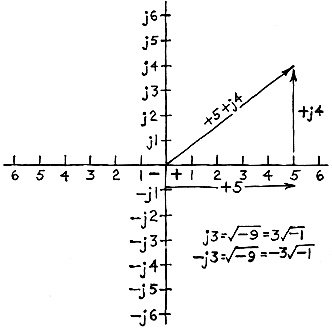
Fig. 3 - A complex number is a combination of a real and an imaginary number. It is shown graphically as a vector quantity, the result of two other numbers.
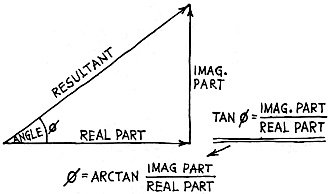
Fig. 4 - The phase angle of a complex-number vector is a function of the two amounts of both the real and imaginary parts. The relationship is described simply by trigonometry. Hence trig computations always yield the complex angle.
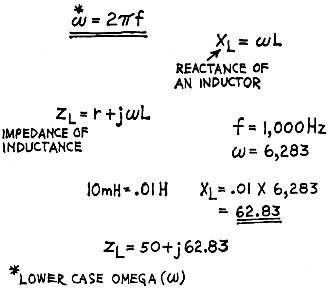
Fig. 5 - Here's how to compute the impedance of an inductance at one frequency.
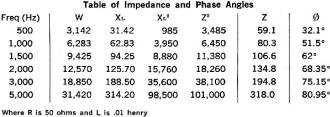
Table of Impedance and Phase Angles
George remembered learning about them, but couldn't remember what they were.
To clarify them, I quickly went over rational numbers, particularly fractions.
I showed, using a number line (Fig. 1), that 3/5 and 5/8 are fractions of close
to the same magnitude. "If we compare various fractions, it seems as if we can make
up just about any size of part we want by taking a suitable denominator, or bottom,
and then selecting an appropriate count, or numerator, of that denominator." I illustrated
this by fitting 49/80 between 3/5 and 5/8.
"That seems logical," George said, "but you say it as if there's a catch. What
is it?"
"Well now, George, I'm sure you remember some numbers that could not be accurately
written, either as decimals or as fractions. No matter what denominators and numerators
you use, nor how many decimal places you use, you can reach only an approximation."
"You mean like pi?" George asked, and then before I could answer he added, "or
root two?"
"That's it. You do remember. That's the difference between rational and irrational
numbers. Any number that can be written accurately with fractions using whole numbers
for numerator and denominator, or that can be written with a terminating decimal,
is called a rational number. It fits the known pattern of numbers before irrational
numbers were admitted to exist. Then mathematicians found impossible-seeming numbers
like root two, or pi ..."
"And they're irrational numbers?"
George butted in.
"That's right."
"Makes sense," he responded, "although I don't remember learning it that way
in school. But irrational numbers aren't the same as imaginary numbers, are they?"
"No, they're not, but notice this:
At one time math scholars thought any number could be represented by a fraction.
Later they realized that irrational numbers belong to a different class than rational
numbers. And do you remember when you first learned about negative numbers?"
"I should say," George replied. "They gave me a hard time. Especially that bit
about minus times a minus making a plus. I never did understand that fully."
"Oddly enough, understanding imaginary numbers will make that easier too." I
then asked him, "Do you know how negative numbers differ from positive numbers?"
"Well, as I see it," he said, "it's like another world, an upside-down world.
When you combine negative numbers with positive numbers, you subtract the negative
ones whereas you would add them if they were all positive."
""You're right. I don't know if a math teacher would accept that answer, but
it shows you know. Now, do you remember doing squares and square roots?"
"It's a bit rusty," he replied, "but I remember it."
"Let's take some simple cases," I suggested, "What is 2 times 2?"
He looked at me as if I must think him stupid, volunteered "4" and then looked
quizzical, as if he thought that answer might somehow be wrong in higher mathematics.
"Right. Now 3 times 3?"
"Nine," he replied, still puzzled. "So you know what squares are.
Now what is -3 times -3?"
"Nine," he replied, hesitantly. "Yes, but is it +9 or -9?" "Well, I remember
having trouble with that," he admitted, "but if I remember right I got it through
my head that it was +9."
"Right." Then I asked, "So what's the square root of +9?"
"Three," he replied.
"Plus 3 or minus 3?" I asked.
He thought for a moment and then said, "It could be either, couldn't it?"
"That's right," I assured him. "So, if the square root of +9 can be +3 or -3,
what is the square root of -9?"
"Didn't we learn that you can't actually have a square root of a minus number?"
"Maybe, but let's recap a little. Before we knew about irrational numbers, no
such number as pi or root two seemed possible. Before we knew about negative numbers,
we were told we couldn't subtract 8 from 3. Later, we accepted the existence of
irrational and negative numbers, and these impossible numbers became possible. So
let's imagine there are roots of negative numbers."
"You mean we just accept them, and then learn to use them." I could see his interest
growing; he wanted to find out where imaginary numbers would come from.
"What we do," I went on, "is to write the letter j and assign it the meaning
square root of -1. All along we have believed there isn't such a thing. Now we imagine
there is, although all we know so far is that we just gave it a name; square root
of -1. But from that very fact, we know that squaring it will make -1."
"That's right enough, but aren't we going round in circles?"
"We soon will be," I replied, "but not in the way you think."
I showed him that, just as the square root of +1 is either plus 1 or -1, the
square root of -1 can have two signs, + j or -j. The square root of -9, for example,
is either +j3 or -j3.
"It doesn't make sense yet," said George, "but go on, 'cause it's getting interesting.
"
"Remember that minus times a minus makes a plus," I said, drawing out vectors
to illustrate (Fig. 2-a). "A minus reverses direction and the second minus reverses
it again, bringing us to the original direction. With j numbers, multiplying j by
j brings us to negative. As a math teacher would say, 'By definition, j times j
makes a minus.' So, if negative represents reversal, what does the j sign mean?"
"From the way you twiddled your pencil," George responded, "I'd say it could
mean halfway to reversal, or 90°. Is that it?"
"You've spotted it, George," I said, sketching a vector representation (Fig.
2-b) for him. "The vector diagrams illustrate ... "
"Hey, I begin to see daylight," he interrupted me. "It's a way of writing quadrature
in math symbols, without spelling it out. But does it make the calculations easier
too?"
"Yes, the j tells you what to do with the number that follows it, just like plus
and minus signs have been doing."
"Just a minute, why j? What does it stand for? Wouldn't i be better - for imaginary?"
"As a matter of fact, that's what mathematicians and physicists use. But in electrical
and electronic work, i already stands for current - although I never knew why -
so, to avoid confusion, electrical people started using the next letter of the alphabet
- j - for root of -1."
"Is that what they call the operator j?" George again butted in.
"That's right."
"And operator j means the root of minus one?"
"Correct again."
"Well, I'll be a monkey's uncle!"
George exclaimed. "I don't know whether that clarifies anything for me, but I've
a suspicion it will."
"In modern math classes," I went on, "they use number lines, as I did to demonstrate
the fractions in my first sketch. Lengths along the line represent numbers." And
I showed him how the concept of negative numbers is developed on a number line,
following the concept of reversal a step further.
"They didn't use number lines when I was in school," George commented. "Maybe
things would have come easier if they had."
"The main thing to note," I continued, "is how you add numbers on a number line.
Start the second number from where the first one finishes; the result, or sum, is
at the end of the sec-ond line segment."
"Makes sense," said George. "In fact, it seems obvious." /p>
"Do you think now you could add an imaginary number to a real number, either
positive or negative?"
"Is it at right angles?"
"That's right. So we have a right-triangle vector addition," I went on, sketching
Fig. 3 as I talked.
"Hey, that really is familiar, though the old right-triangle bit always gave
me a headache!"
''Then how would you go about finding the total, or resultant vector?" was my
next question.
"Oh, that's old Pythag ... what's his name? The sum of the squares on the other
two sides - what did they call it, hypot ... ?" George wondered aloud.
"It's Pythagoras' theorem," I filled in, "and the side opposite the right angle
is call the hypotenuse. I'll bet you've done quite a few exercises in school squaring
two sides and finding the square root of their sum for the result."
"Yes," George said, "we seemed to have endless exercises in that at technical
school. Will imaginary numbers take the sweat out of all that?"
"Sure will. Right now, it may seem Just another name for what you've done before.
But as we move along, you'll find imaginary numbers lead to more and more shortcuts,
making calculations easier."
"That's for me," declared George.
"Now to complete the picture. For this one vector in my sketch, do you know how
to find the phase angle?"
"You have me there. It has something to do with the ratio of two sides - is that
right?"
I nodded and he went on, "I had some trig. It's called the sine or cosine or
something like that, isn't it?"
"The sine and cosine are two other ratios," I told him. "This one's the tangent.
It's the side opposite the phase angle, divided by the side adjacent." And I sketched
it (Fig. 4).
"The one opposite is the imaginary part, while the one adjacent is the real part.
Now, to every angle there is just one tangent ratio, and to every tangent ratio
there is just one angle. So we can find the angle from the tangent ratio, or the
tangent ratio from the angle - either way, so long as we have one of them to start
with."
George said, "Let's get this straight: I know the ratio between imaginary and
real parts, so I look up the tangent of this ratio to find the angle. Is that right?"
"Ordinarily, it's the other way round. If you knew the angle in degrees, you'd
look up the tangent of the angle to find the ratio between the imaginary and real
parts. Here, you know the ratio, so you look up the arctan to find the angle. As
we don't happen to have arctan tables, we can use the tangent table backward, or
a slide rule.
"Let's take something practical and relatively simple, like an inductance with
some series resistance. The real part of its impedance, producing in-phase voltage
and current, is the coil resistance. The imaginary part, producing quadrature voltage
and current, is the inductive reactance of the coil. Do you remember inductive reactance?"
"Let's see," pondered George, "it depends on L - the inductance in henrys - and
there's a 2-pi-f in it, isn't there?"
"When we're using it a lot, it's much easier to write a lower-case omega for
2-pi-f." I wrote this equation on our scrap paper (Fig. 5). "Now, does inductive
reactance get bigger or smaller as we increase frequency?"
"Isn't inductive reactance directly proportional to frequency?"
"Right. If L is in henrys, and f is in hertz and omega is 2-pi-f, then inductive
reactance is simply omega times L."
"That does make it look simple," commented George.
"A reactive voltage is in quadrature with current," I went on, "so that means
we need a j to represent the value properly. If the coil resistance is R ohms and
the inductance is L henrys, the complete expression for impedance is Z = R + jωL.
By multiplying various values of f by 2π to get omega, we can make this expression
tell the whole story, at all frequencies. Now what's the numerical value, or magnitude,
of this expression?"
"From what we were saying earlier," George replied, "you'd square R and square
omega-L, add the two squares together and then take the square root."
"You're catching on fast. Now what's the phase angle?"
"That's not so easy, but I know it has to do with the ratio between R and omega-L,"
he replied.
"Let's put in some numbers, and see how this works," I suggested, turning again
to Fig. 5. "Suppose a 10-mH coil has a resistance of 50 ohms. Let's figure its impedance
and phase at a few frequencies. To start with, take 1,000 Hz. First, what is omega
at 1,000 Hz?"
"Well, 2-pi is 6.283, so 1,000 Hz makes omega 6,283."
"Correct. So what is omega-L at 1,000 Hz?"
"10 mH is one-hundredth of a henry," George mused, and doodled a moment, "so
omega-L comes out to 62.83, right?"
I showed him how to use his slide rule to sum the squares and take the square
root at that sum, getting 80.3 ohms as the impedance Z. I asked him about the phase
angle. He had the idea, but needed to be shown how to do it.
He solved the ratio of imaginary to real, which was 1.257, and I showed him on
the slide rule the angle-about 51 1/2°. Then he took the slide rule and calculated
impedance and phase angle for several other frequencies, while I watched. His results
are shown in the table. He was thrilled at how simple it seemed.
Then I threw in the notion of using admittance values instead of impedance values
for parallel combinations whose phase is in quadrature. He wanted to know why. He'd
always preferred thinking in impedances.
I showed him that, with a specific voltage, he'd have to divide by the complex
number representing impedance to figure out current. With admittance, he could simply
multiply.
"Is that so much easier?" he wanted to know.
Just then the evening whistle blew. George and I both had to be going.
"If you don't have too much work ahead of you," George asked, "can you drop by
another time soon and finish telling me that bit?"
"Sure thing," I replied.
To Be Continued
Posted July 22, 2024
|















